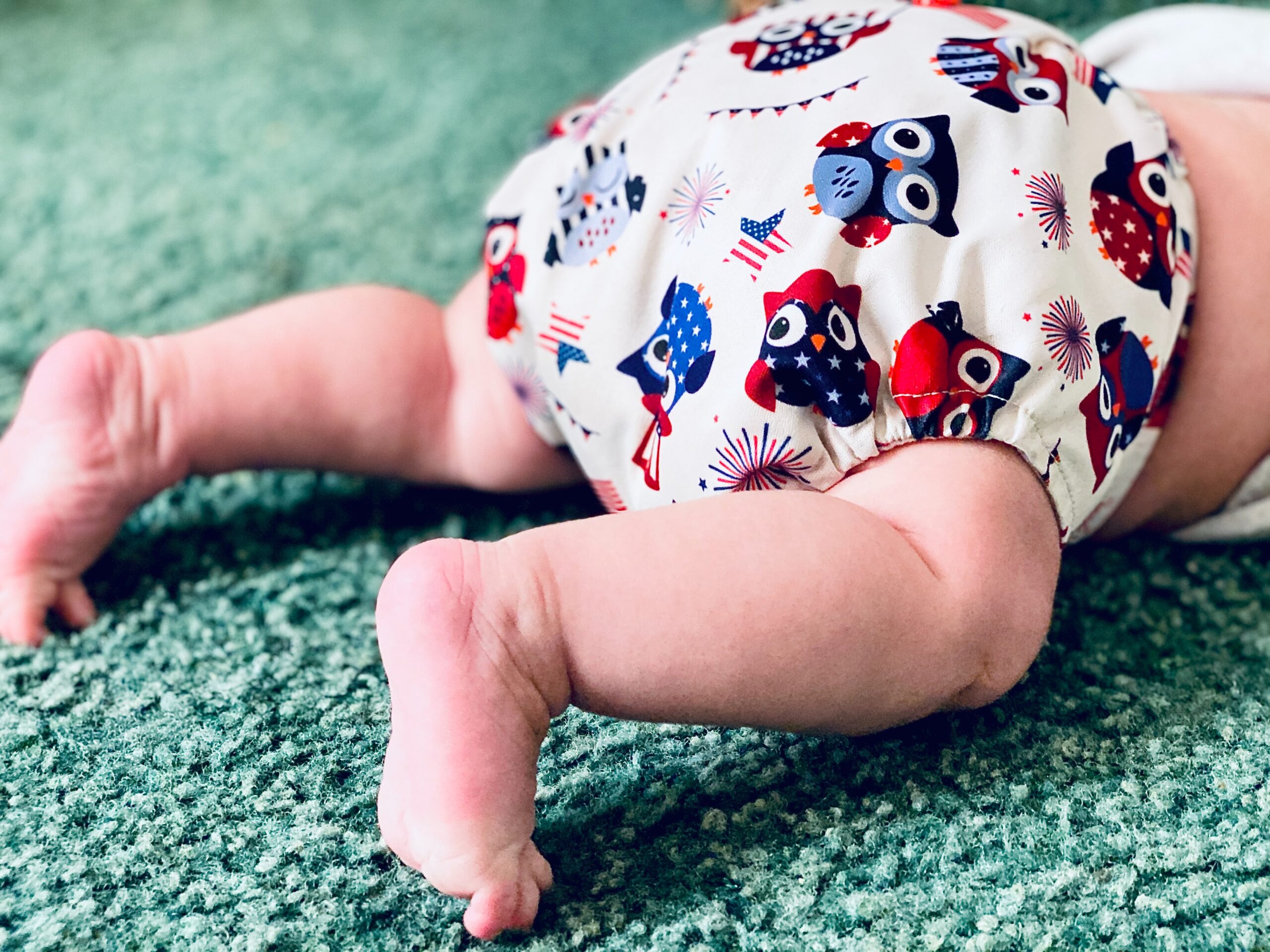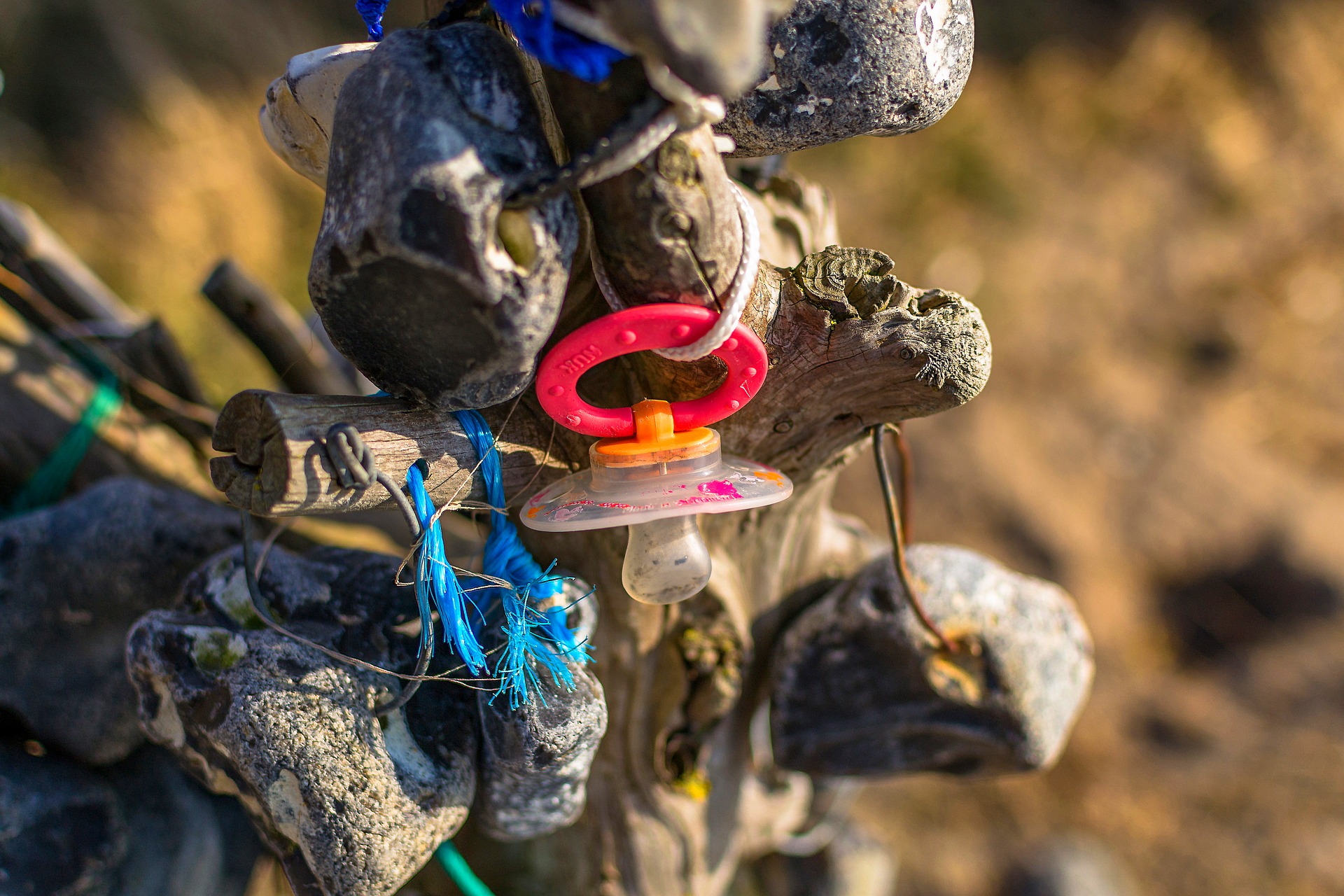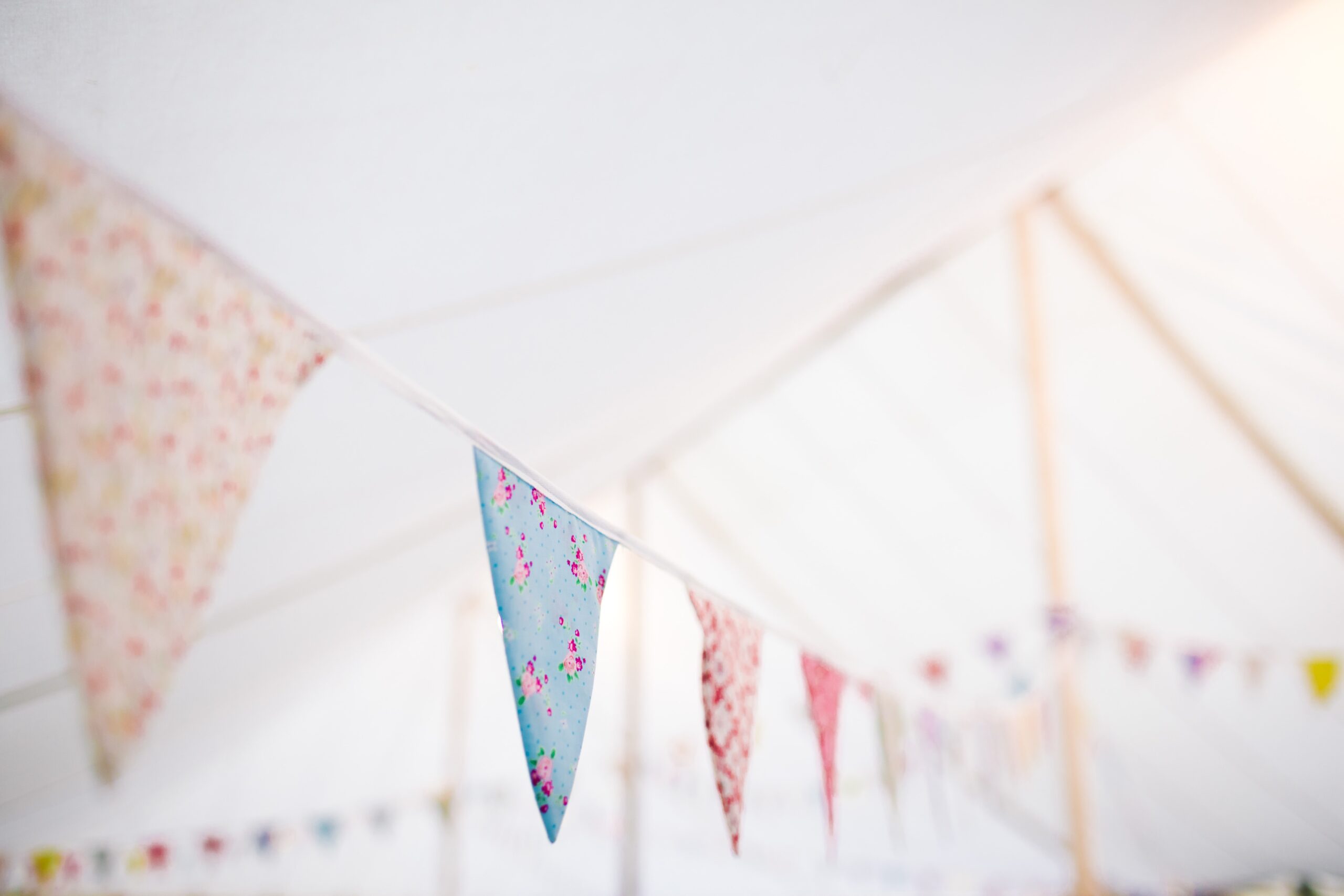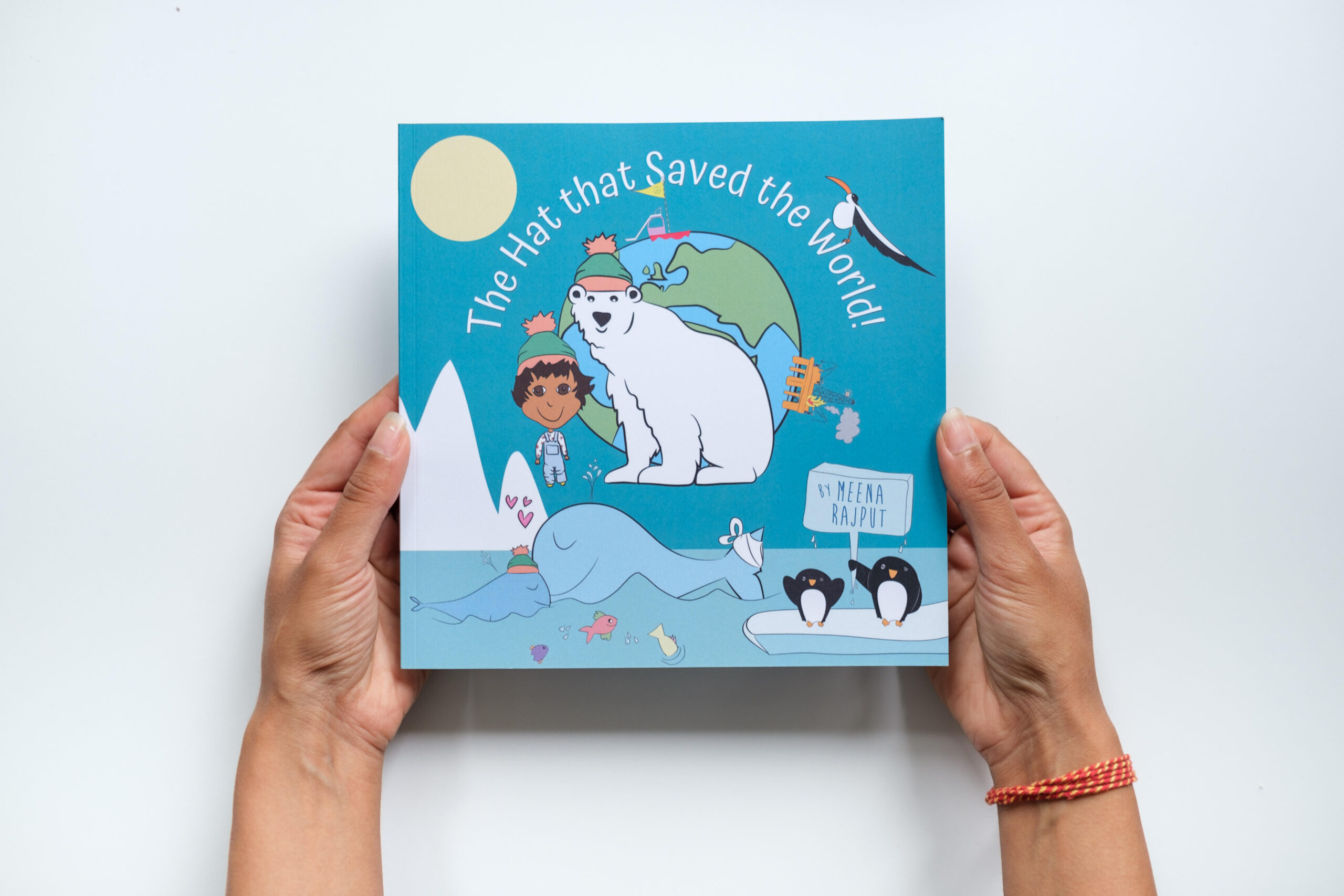There’s just too much plastic in everything – and that includes maternity wear, nappies, bottles, and baby clothes. Here’s how to cut back on plastic during pregnancy and parenting, and raise awesome environmental activist children in the process.
Plastic-free periods
Long before you might be lucky enough to see that double line on the (plastic) stick, it’s worth looking into the most planet-friendly ways to go through the monthly menses.
One estimate reckons the average sanitary pad has as much plastic as four supermarket carrier bags. Yikes. Luckily, there are some incredible solutions for plastic-free periods. These include silicon cups, plastic-free tampons, washable pads to replace disposable ones and even designer ‘period pants’.
Maternity clothing

What can you expect from your wardrobe when expecting? Well, to state the obvious, many of your clothes won’t fit you for a while. But there are a few nifty solutions.
Make do with what you have with waistband extenders, which you can buy or even make yourself. Those expecting in winter can even buy coat extenders which zip into your existing coats. This is win-win – you get to wear your favourite clothes and reduce the demand for new clothing that only adds to fast fashion’s terrible polyester problem.
Go for second-hand maternity wear – many pre-loved sites and apps have maternity-specific pieces. Finally, try upcycling large garments (dad-to-be’s old shirts perhaps?) into something belly-embracing that suits your style. If you do buy new, consider loose-fitting shapes that can see you through from big bump to fashion-forward mum.
Nappies and wipes

Each baby goes through around an estimated 6000 nappies in their infant years. In the UK alone, an estimated 2.5 billion nappies are used every year, with more than 90% of them ending up in landfill where they will take over half a millennium to break down.
Alternatives to plastic, disposable nappies and wet wipes include washable and reusable cloth or biodegradable versions. But these can be ineffective, impractical and expensive. Clever combination-solutions include washable cloth inserts inside a leak-proof outer nappy, and washable cloths. Even so, washing hundreds of nappies, wipes or liners a week might not be realistic either. Go easy on yourself, and do what you can.
Check out the variety of sustainable nappies, and learn about some options for your family. Perhaps consider gently easing into the plastic-free life only when you understand the schedule of things a bit more. When you’re ready, you can even try out reusable nappies from a local nappy library.
Bottles and dummies

Plastic bottles have a bad reputation, even in reusable form. A number of companies have started making glass baby bottles, which are as specially-designed and shock resistant as you’d hope. If you or your baby aren’t quite ready for glass, there are stainless steel and bamboo options too.
For bottle teats and dummies – commonly found on pavements and in landfills the world over – there’s currently only one eco-friendly material that can reliably substitute silicon. Find natural rubber pacifiers and bottle teats at Hevea, which has a wide selection.
Children’s clothing
Numerous websites have sprung up to offer second-hand children’s clothing (some with maternity wear sections too). Here’s a selection:
- Growth Spurtz (includes maternity wear)
- TotSwap (includes maternity wear)
- Buildabundle
- Kidclo
- Katie’s Kids Clothes
- Worn By Littles (vintage denim and dungarees)
- Slof – Slow fashion for kids
- Pure Bundle (high-quality, sells in curated bundles)
- Loopster (high-quality brands)
- Wolf & Mabel (vintage)
- Monstrous Vintage Kids (vintage)
But even second-hand, this is still a lot of shopping. After all children go through seven discrete sizes of clothing in their first two years.
For a super smart sustainable fashion solution, check out innovative childrenswear designer Petit Pli. The company creates rainproof, machine-washable, concertina origami-like clothing for children to grow into.
As well as solving an age-old problem, and making your kids look hypercool, engineer founder Ryan Yasin is dedicated to reducing waste in fashion. The brand uses the most durable materials necessary for his energetic little customers, who he calls ‘extreme athletes’.
Toys and wheels
Plastic feels ubiquitous in toys, but there are alternatives. Try handmade wooden toys from Bella Luna Toys, and opt for pioneering plastic-free toy companies like Le Toy Van, Eco-Tots and Envirotoy.
Some classics are naturally eco-friendly. Try Retro Toys for the gorgeous aesthetic as well as the green credentials. And even old plastic-laden favourites like Lego have started to look at alternative materials so will hopefully become more sustainable in future.
For prams, buying second-hand is a smart move financially as well as environmentally. Try the usual pre-loved sites, Freecycle and dedicated shops like Rascal Babies and Second Hand Prams. Note that it’s not recommended to buy car seats second-hand, for safety reasons.
Crafts, gifts and parties

When you’re in the swing of things, you may want to avoid plastic in arts and crafts activities, children’s parties and gift wrapping.
Opt for more eco-friendly craft gear and biodegradable glitter – and teach your little ones early that all that glitters need not be plastic. Teach your children to love pencils and paint, and keep (good quality) plastic pens well so they can be used more sparingly and last longer. Find fun ways to get crafty with nature’s gifts – autumn leaves make great collages, for example.
For celebrations, consider making or buying upcycled cloth bunting, and using recycled wrapping paper and plastic-free party ware.
Children’s books
Once old enough for bedtime stories, give them a head start in their environmentalism by choosing empowering stories of the wonders of nature and tales of little change-makers.

Don’t forget to consider the issues and the heroes of the books you choose, as this will shape who your children will see as their role models. The next generation of climate activists deserve to be a lot better informed on the interlinked nature of environmental and social justice – and you are uniquely placed to help them with that.
Your child’s first stories have the power to inspire them into a fulfilling life – and perhaps even professions or vocations – that will shape a kinder, greener and healthier society.
Think ahead and pay it forward
It’s worth thinking about what’s going to happen to anything you buy when you no longer need it. This is important when it comes to plastic particularly – and don’t forget that includes most textiles, which are commonly made from polyester or polyester blends, which can’t be recycled easily.
With any gear you can, sell it, or hand it down to another family, to give it a chance at a second life. And remember that not everyone can load up new baby stuff. If you are fortunate to be able to do so, donate what you don’t use anymore to a scheme like the Baby Bank Network.



